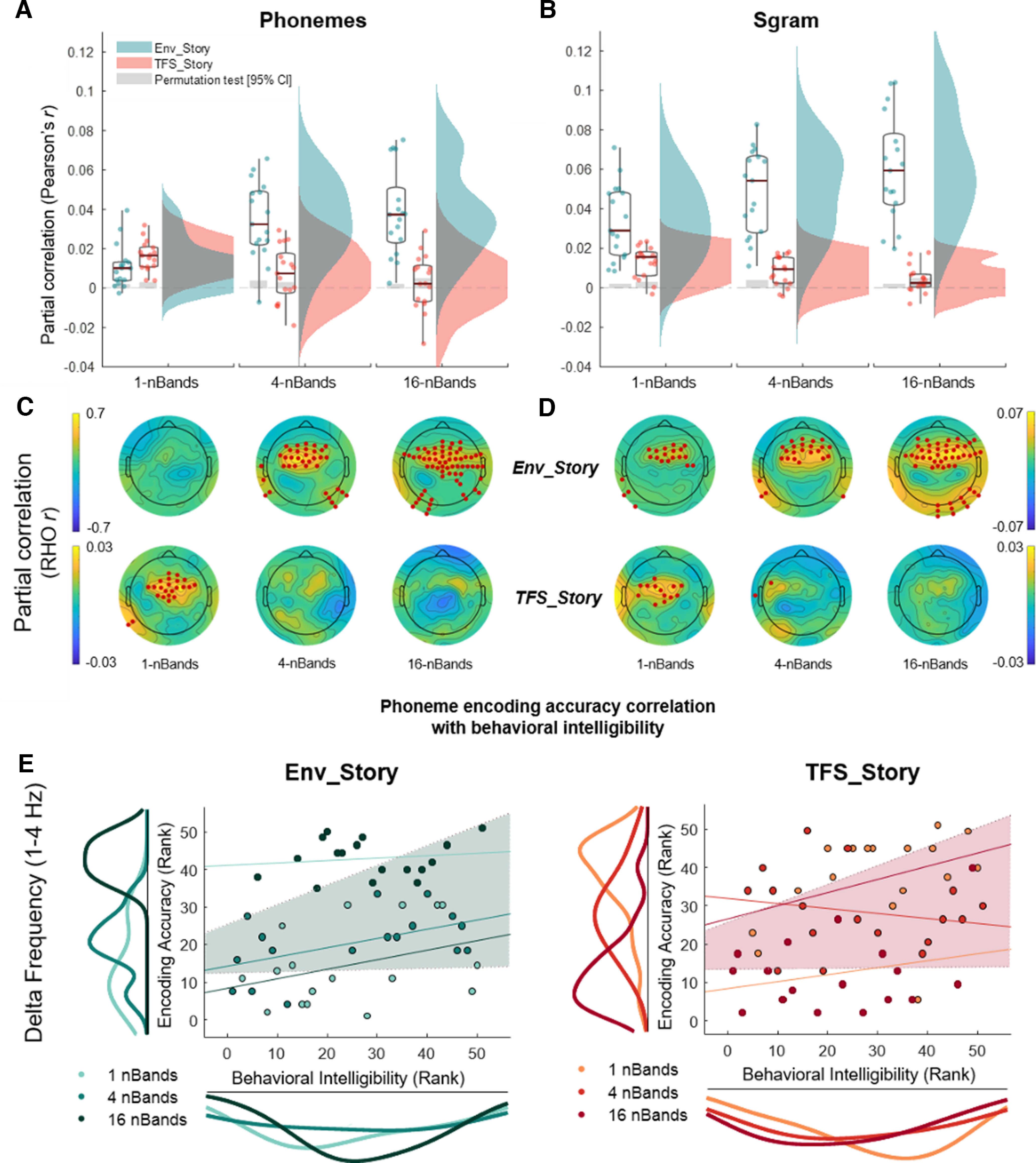Figure 6.

Partial correlations of real EEG and EEG predicted using forward encoding models based on different stimulus feature representations. A, Partial correlation of real EEG and EEG predicted using the phonetic feature representation (Phonemes) while controlling for the acoustic representation (Sgram). Correlations are averaged over the same set of 12 electrodes as in Figure 5, that is, a set with high prediction accuracies over frontotemporal scalp (6 on the left side of the scalp, and their symmetrical counterparts on the right). B, Partial correlation of real EEG and EEG predicted using the Sgram representation while controlling for the Phon representation. Box plots (mean ± SEM) and rain kernel density estimates of partial correlation Rho (Pearson's r, two tailed) values for Env_Story (turquoise) and TFS_Story (peach). Group and individual statistics; black line in box plot indicates mean across subjects, and gray box demarcates single-subject-level statistical significance above chance (permutation test based on shuffling trial labels 1000 times before predicting EEG, *p< 0.05). Single dots represent single-subject data. C, D, Topographical plots show partial correlation Rho across channels for Env_Story (C) and TFS_Story (D). Red dot indicates significant effects at group level statistics (one-tailed cluster-based permutation test, *p< 0.05). E, Phoneme encoding according to accuracy relationship with behavioral intelligibility scores for delta (1–4 Hz) frequency band. Left, Env_Story; right, TFS_Story. Individual dots represent subjects and are color coded according to condition. Using robust Spearman's correlations (bootstrap permutation test p< 0.05, confidence interval 95%). This was done for each individual condition (colored lines), as well as collapsed across all conditions (shaded area representing confidence interval 95%). Subplots show the distribution of the data in terms of both envelope decoding (left) and behavior (below) using the same color code as the subject dots.
